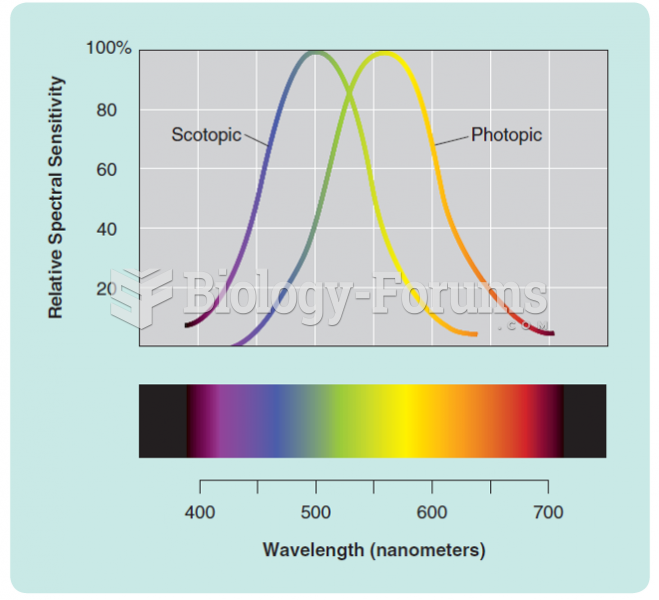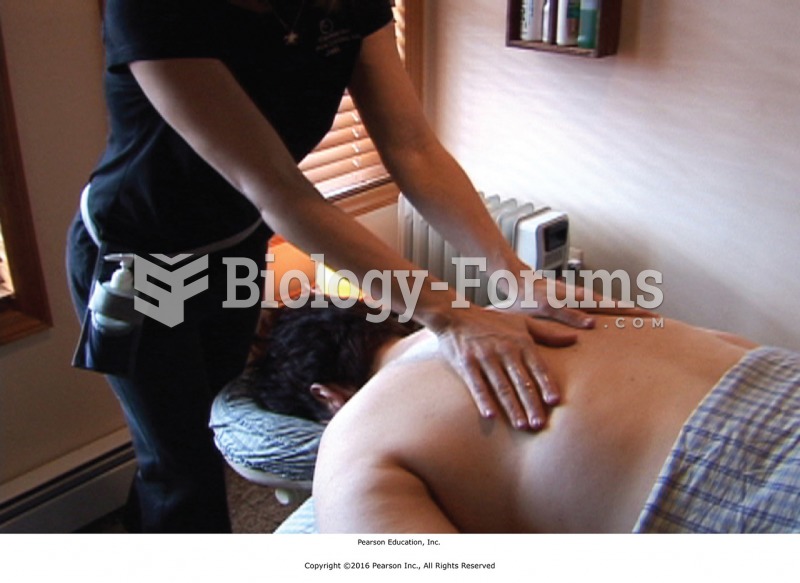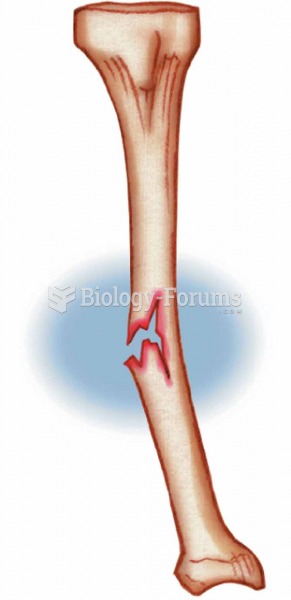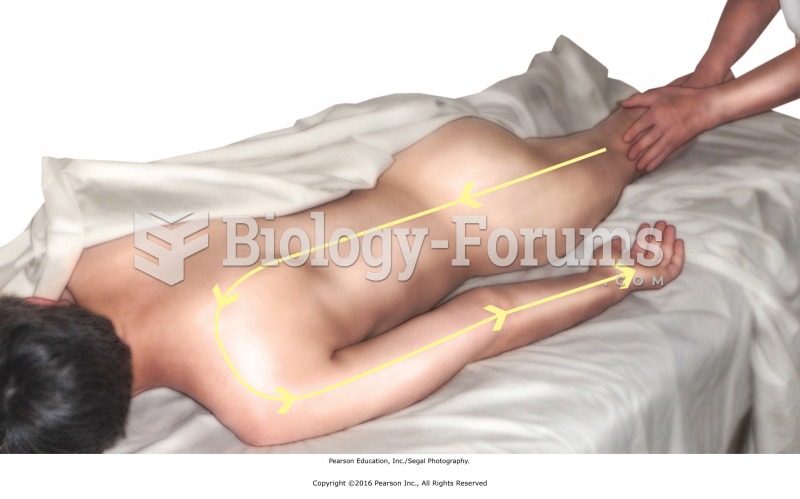|
|
|
IgA antibodies protect body surfaces exposed to outside foreign substances. IgG antibodies are found in all body fluids. IgM antibodies are the first type of antibody made in response to an infection. IgE antibody levels are often high in people with allergies. IgD antibodies are found in tissues lining the abdomen and chest.
According to the FDA, adverse drug events harmed or killed approximately 1,200,000 people in the United States in the year 2015.
Patients who have been on total parenteral nutrition for more than a few days may need to have foods gradually reintroduced to give the digestive tract time to start working again.
In inpatient settings, adverse drug events account for an estimated one in three of all hospital adverse events. They affect approximately 2 million hospital stays every year, and prolong hospital stays by between one and five days.
Many of the drugs used by neuroscientists are derived from toxic plants and venomous animals (such as snakes, spiders, snails, and puffer fish).
 Human photopic (cone) and scotopic (rod) spectral sensitivity curves. The peak of each curve has ...
Human photopic (cone) and scotopic (rod) spectral sensitivity curves. The peak of each curve has ...
 Good contact feels full, confident, and deliberate and establishes a warm connection between massage ...
Good contact feels full, confident, and deliberate and establishes a warm connection between massage ...





